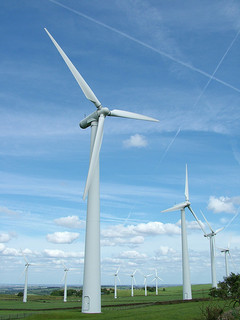On October 16, 2013, the Supreme Court granted certiorari in Coalition for Responsible Regulation v. EPA. The cert. grant was narrow and limited to: “whether EPA permissibly determined that its regulation of greenhouse gas emissions from new motor vehicles triggered permitting requirements under the Clean Air Act for stationary sources that emit greenhouse gases.” A broad cross-section of industry and fourteen states had filed 9 petitions for certiorari, challenging various aspects of EPA’s greenhouse gas regulations, including: the agency’s scientific “endangerment” finding for greenhouse gases, the “tailpipe rule” setting greenhouse gas standards for mobile sources, and the “timing and tailoring rules” which phased in regulation of stationary sources of greenhouse gases under the “prevention of significant deterioration” program of the Clean Air Act. In 2012, a D.C. Circuit panel comprised of Chief Judge Sentelle along with Judges Tatel and Rogers, had denied the challenges to the endangerment finding and the tailpipe rule, and dismissed the challenges to the timing and tailoring rules for lack of standing. The Court also denied the challenge to EPA’s regulation of stationary sources under the PSD program as a necessary consequence of the tailpipe rule, reasoning that the Clean Air Act “compelled” this result. This is the question on which the Supreme Court has now granted review.
Quotes from Professor Freeman:
Quotes from Professor Lazarus:
Supreme Court to Hear Challenge to E.P.A. Rules on Gas Emissions
Affiliates React to Supreme Court EPA Regulations Case
EPA and Obama Administration Winners Even as Supreme Court grants review in Greenhouse Gas Cases
by Jody Freeman
This case is already a win for the EPA and the administration, even though the Court granted review. Why? Because the grant is narrow, and avoided the most dangerous issue, the endangerment finding.
That scientific finding is the legal basis for the power plant rules. These rules can still move forward no matter what happens in this case. And the fuel efficiency standards from the first term remain in place—the Court declined to review them. So industry won’t achieve its first goal, which is to derail the president’s climate program.
Industry will not achieve its second goal either, which is to prompt Congress to strip EPA of regulatory authority over greenhouse gases through this litigation. EPA had tried to do something here that would normally please industry—limit its regulation to only the largest polluters by exempting millions of small sources from greenhouse gas permitting requirements.
But the petitioners argued that EPA lacks the authority to tailor regulation in this way, and has no choice but to regulate even the smallest emitters like local landfills, farms, even large residences. Industry hoped that if they won, Congress would step in and strip EPA of its authority to regulate GHGs.
This won’t happen now. The Court chose not to review EPA’s decision to limit its regulation to the largest polluters. EPA can’t be forced to regulate more. It can only be forced to regulate less.
But the Court did grant review, so isn’t something at stake? Of course, EPA would rather not have to defend any of these rules. Counsel for industry are trumpeting the cert grant as a sign that EPA has overstepped, requiring the agency and its supporters to fight back.
And it’s true that the Court might limit EPA’s authority to regulate greenhouse gases under the “PSD” program, which was originally designed to maintain good air quality in clean parts of the country.
But even this might turn into win for the government.
Here is how the program works, very simply. New and refurbished facilities areas with good air quality must go through a state permitting process and install pollution controls before they can build. The point is to ensure clean air doesn’t become dirty air because of new construction.
The Court could say that the permitting process under this program is triggered only by sources that emit traditional ground level pollutants—the so-called “criteria” pollutants that directly cause public health problems like asthma and lung disease, not greenhouse gases. Facilities that emit only greenhouse gases would be exempt.
This outcome might look like a loss for EPA, but it isn’t. The overwhelming majority of greenhouse gas emissions come from sources that also emit traditional pollutants in significant amounts. And once a facility triggers into the program because it emits one of the traditional pollutants, the law clearly says it must control all of the pollution it emits, including greenhouse gases. (On this latter point, EPA has a very strong legal argument.)
EPA could still reach most of the greenhouse gas emissions from the largest polluters in the country, while leaving smaller sources, which have never needed a permit for anything, alone.
No one, especially the government, likes to lose in the Supreme Court, and this reading of the law is not EPA’s first choice. But at least some officials would secretly sigh with relief if they wound up stuck with it.






